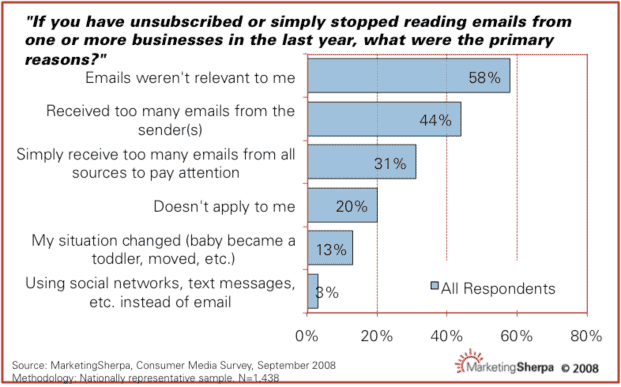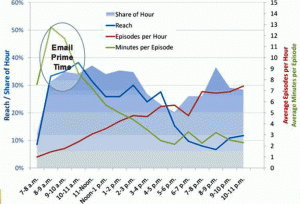by Admin on February 14, 2012
Lead nurturing is the process of developing that relationship with your potential customer by sending targeted, relevant, and valuable messages to them in a timely manner. Companies that excel at lead nurturing are able to generate more sales-ready leads at a lower cost-per-lead.
Email Marketing Best Practices:
List Building
- Create opt-in opportunities.
- Give people a reason to opt-in.
- Only send messages to people who have explicitly opted in.
Sending
- Stay relevant.
- Get personal. Use a name and email address in the “from” line of your email that your recipients will recognize.
- Get into the mind of your recipient and ask, “What’s In It For Me?” (WIIFM) Make the value clear in both the email body and the subject line.
- Don’t rely on images.
- Be consistent.
- Brush up on CAN-SPAM regulations to make sure your email practices comply.
Converting
- What do I do here? When someone opens your email, make it clear what they’re supposed to do.
- The landing page is part of your email campaign. Make sure your email offer and landing page flow.
Measuring
- Click-Through Rate (CTR) measures response.
- What about open rate? Open rate is an increasingly unreliable metric. Focus instead on how many clicks your email received.
- Unsubscribe rate measures annoyance and spam. You want to make sure your unsubscribe rate does not exceed 5%.
- Conversion rate measures actions. Test different landing pages to improve the conversion on your website.
Lead nurturing is all about developing relationships with your leads. Do it right and it can payoff big time.
For more information on nurturing leads with email marketing download our “Essential Step-by-Step Guide to Internet Marketing”.

by blogmistress on March 19, 2009

Another interesting chart from Marketing Sherpa. This one tells us why people unsubscribe from receiving email.

This chart tells us that when people subscribe to receive information from us: 1. We need to deliver relevant information and 2. We need to not flood customer’s inboxes.
My own experience tells me that however relevant the information, if there is too much of, eventually, I and possibly your customers will just tune it out.
So, once again, we are back to something we have talked about several times, being relevant. Good point.
by blogmistress on February 12, 2009

Herb Lawrence from Arkansas Small Business & Technology Development Center (ASBTDC) recently sent me some great information. I gleaned this from one of the white pages by Exact Target. What is the best time of day to send an email? Keep in mind that in addition to the best time of day the best time at all is when you have permission. Sending unwanted email any time of day is not a great idea. Here it is:
Usage Patterns of Email
One of the questions asked most often in the email industry is, “What is the best time of day to send an email?” The answer we typically provide is, “There are several variables that determine the best day to send email. Success will depend upon your industry, permission level for communication, communication type, etc. Given these factors, we recommend you conduct some testing to determine the best time of day to send for your business.”
Self-reported data can certainly be suspect, since individuals tend to report themselves in what they believe to be a positive light, or they respond in a manner they believe consistent with the surveyor’s goals. But behaviors don’t lie. As it relates to usage of different communication vehicles and marketing channels, understanding the habits of our consumer base can be quite insightful.
The chart below shows the results of observations of consumers using email throughout the day, and highlights four variables: Share of Hour, Reach, Episodes per Hour, and Minutes per Episode.



You can see that not only does email reach its peak in the morning hours, consumers tend to spend much more time per email episode (up to nearly 13 minutes on average) in the morning vs. just an average of 2 minutes per email episode late in the afternoon and evening.
What are the implications to a marketer in light of this data?
In the morning, consumers tend to dive deeper into email, where in the afternoon they are consistently in-and-out of their inboxes. Perhaps marketers sending newsletters or pitches that require more consumer involvement should consider sending them earlier in the day, when the consumers are more likely to spend the necessary time. Also, marketers relying on promotions with a “quick and clear” call to action could not only survive, but thrive later in the day when consumers are in quick-hit mode.




